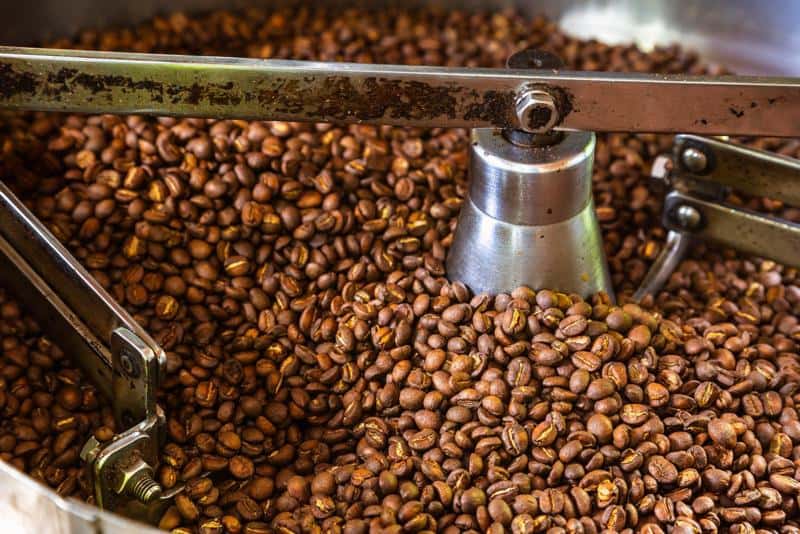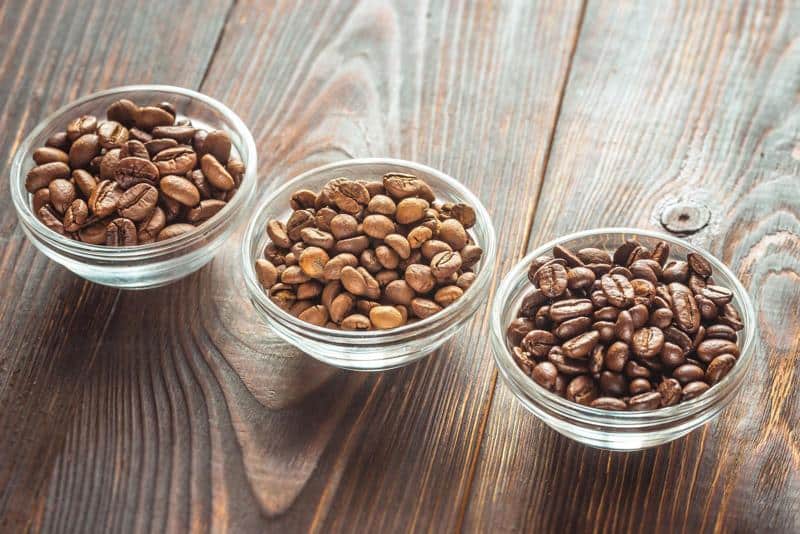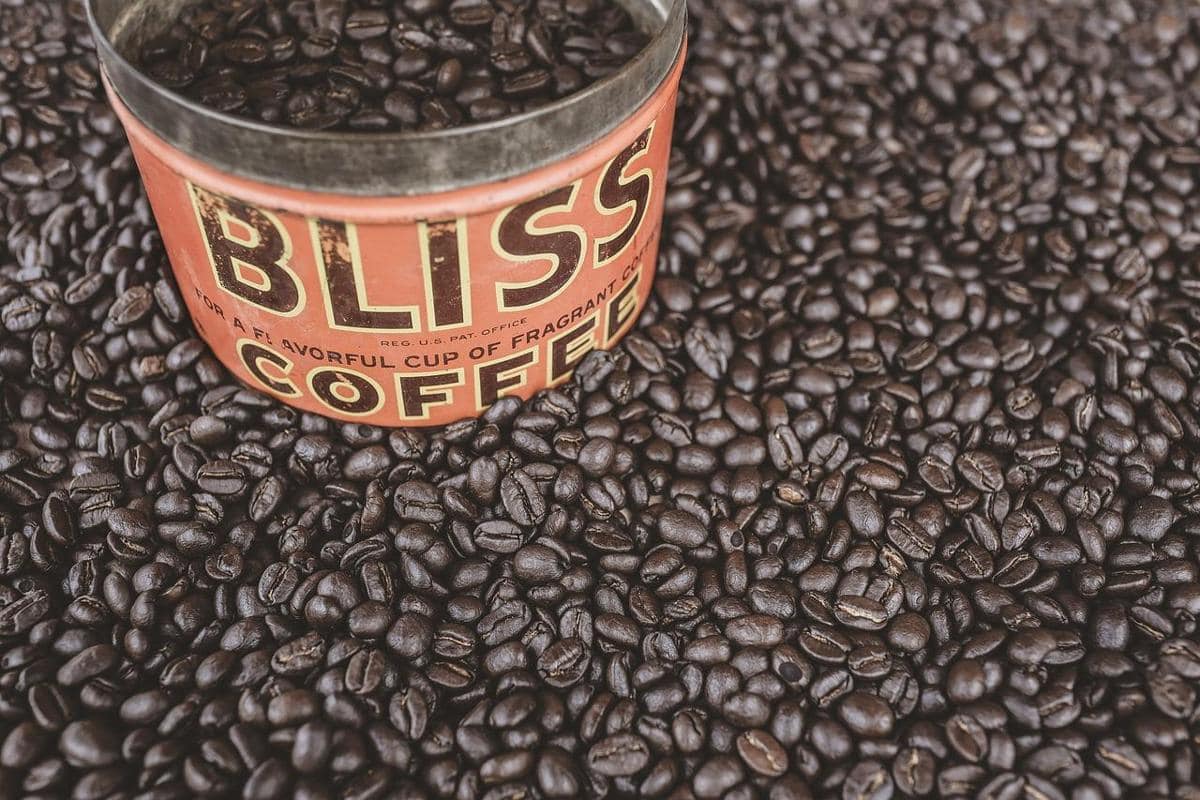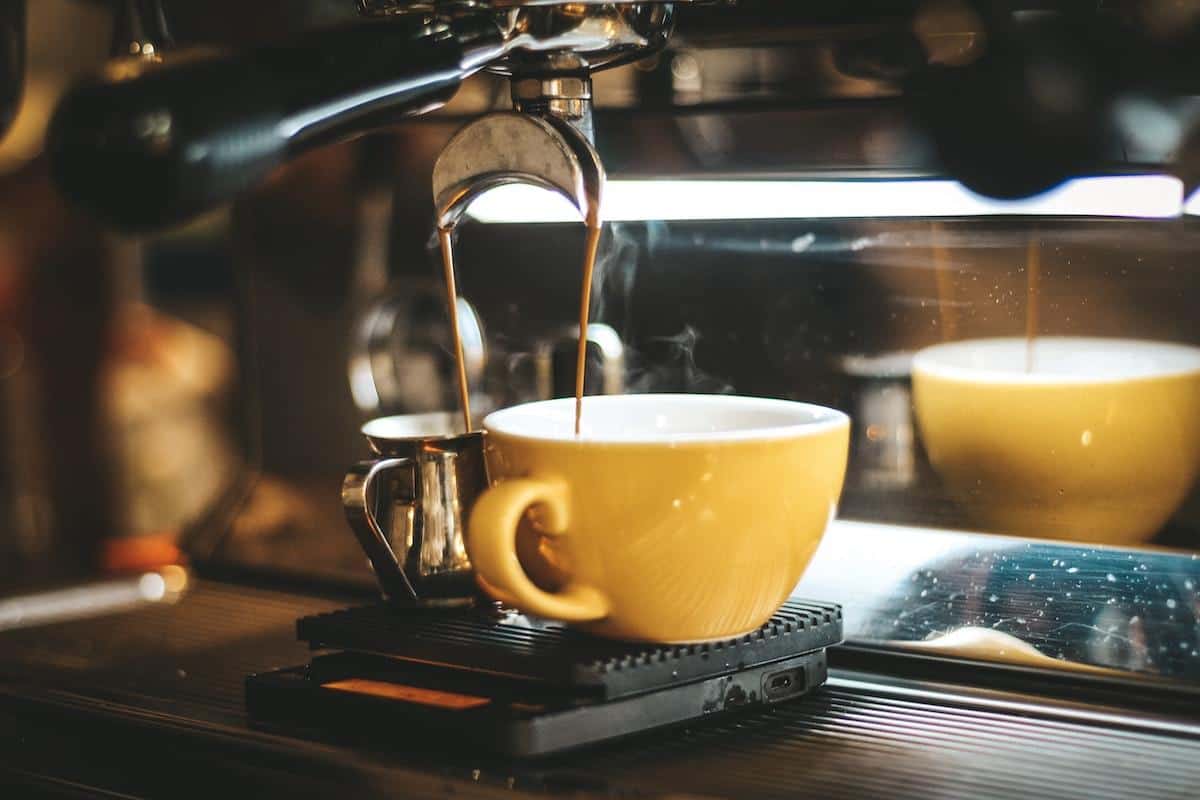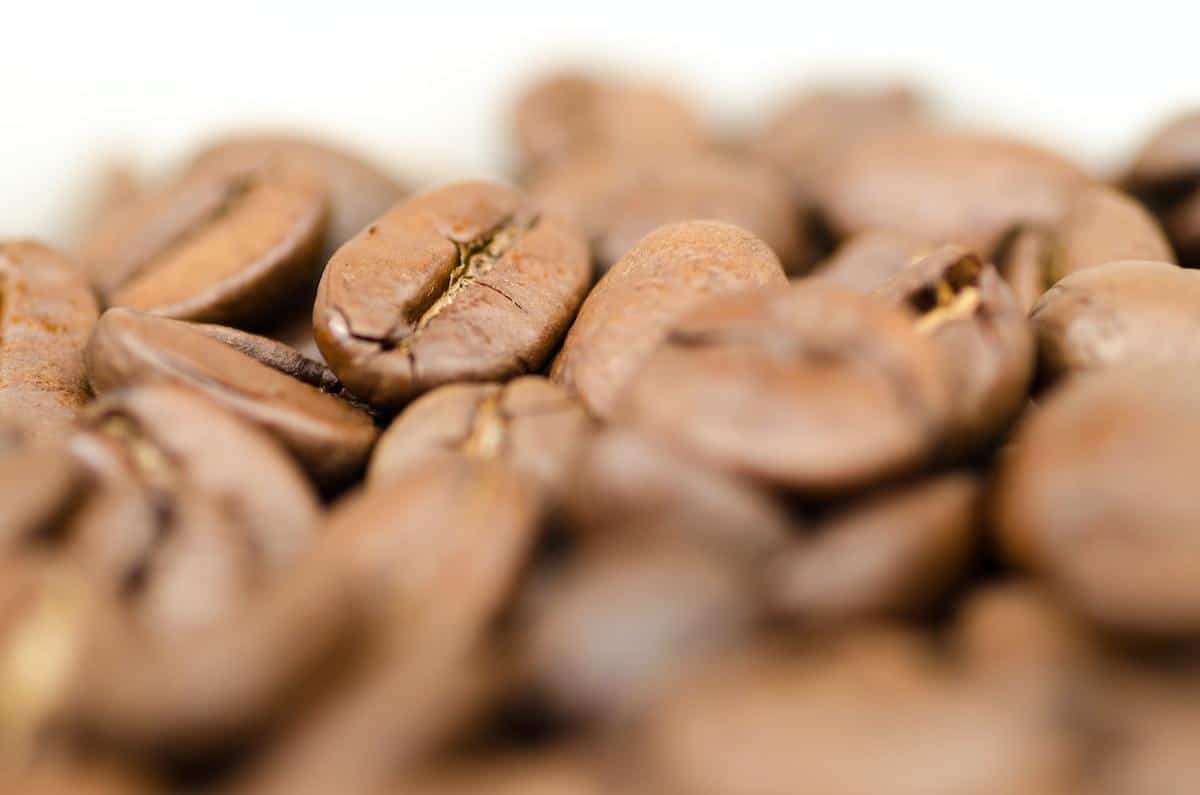How long do coffee beans last? This is a question that many coffee enthusiasts may wonder as they strive to achieve the perfect cup of java. The shelf life of coffee beans plays a crucial role in determining the overall taste and quality of the brewed coffee. Understanding the factors that affect coffee bean freshness can help elevate your morning ritual to a whole new level.
The freshness of coffee beans is more than just a matter of preference; it significantly impacts the flavor profile of your favorite brew. Oxygen, moisture, and light all contribute to the degradation of coffee beans over time, resulting in a loss of aroma and taste. By delving into the science behind this process, we can better appreciate why coffee bean freshness matters.
Various factors influence how long coffee beans remain fresh after roasting. These include roast level, packaging, storage methods, and even the type of coffee bean itself. For instance, Arabica and Robusta coffees may differ in their shelf life due to variations in oil content and composition. Single-origin coffees might have different longevity compared to blends. Exploring these factors will aid in understanding how to maximize the lifespan of your precious beans.
In this article, we will delve into the intricacies of coffee bean shelf life and offer practical advice on proper storage techniques and extending their freshness. We will also discuss the trade-offs between convenience and superior taste when it comes to freshly ground versus pre-ground coffee.
By the end, you’ll be equipped with tools to determine if your beans are past their prime and ensure an exceptional cup every time you brew. So grab your favorite mug and let’s explore the world of coffee bean freshness together.
Why Does Coffee Bean Freshness Matter?
Coffee bean freshness is a critical factor in delivering the best flavor and quality in your cup of coffee. Understanding the role of oxygen, moisture, and light in coffee bean degradation can help you appreciate why freshness matters.
Oxygen is one of the main culprits behind the deterioration of coffee beans. When coffee beans are exposed to oxygen, they undergo a process called oxidation, which leads to the breakdown of compounds responsible for aroma and flavor. This results in a loss of complexity and vibrancy in your brewed coffee. To prevent excessive exposure to oxygen, it’s crucial to store your coffee beans in an airtight container that minimizes air exchange.
Moisture is another enemy of coffee bean freshness. When coffee beans absorb moisture from their environment, they become susceptible to mold and mildew growth. This not only affects the taste but also poses health risks. Moisture can also cause coffee beans to go stale more quickly by accelerating chemical processes within the beans. It’s essential to keep your coffee stored in a dry environment with low humidity levels.
Light can also have damaging effects on coffee beans’ shelf life. Exposure to light accelerates oxidation and degrades compounds responsible for flavor and aroma. UV rays, particularly found in sunlight, are incredibly harmful in this regard. To protect your coffee beans from light degradation, store them in a dark place away from direct sunlight or artificial sources of light.
Understanding how oxygen, moisture, and light contribute to the degradation of coffee bean flavor allows you to take necessary precautions when storing your beloved beans. By minimizing these factors’ influence on your coffee beans, you can ensure maximum enjoyment when brewing your perfect cup every time.
Factors That Affect Coffee Bean Shelf Life
Roast Level
The roast level of coffee beans can have a significant impact on their shelf life. Lighter roasts generally retain their freshness for a longer period of time compared to darker roasts. This is because the longer and hotter roasting process that dark roasts undergo can accelerate the oxidation process, leading to quicker deterioration in flavor and aroma. Therefore, if you prefer to have coffee beans that last longer, it may be wise to opt for a lighter roast.
Packaging
The packaging of coffee beans plays a crucial role in determining their longevity. Coffee beans should ideally be stored in bags or containers that are specifically designed for coffee storage, with features like one-way degassing valves.
These valves release the built-up carbon dioxide gas while preventing oxygen from entering the package, which can lead to staling and loss of flavor. It is important to ensure that the packaging is airtight and able to protect the beans from moisture and light.
Storage Methods
Proper storage methods are essential for preserving the freshness of coffee beans. The ideal conditions for storing coffee include cool temperatures (around 50-70°F), low humidity (less than 60%), and darkness. Coffee beans should be kept away from direct sunlight or heat sources as they can accelerate deterioration. It is also important to avoid placing them near strong-smelling substances as coffee beans are highly absorbent and can easily take on odors.
Additionally, it is recommended to store coffee beans in whole bean form rather than grinding them before storage. Grinding exposes more surface area, which facilitates faster oxidation and deterioration of flavor compounds. By grinding your beans just before brewing, you can ensure maximum freshness and enjoy a more flavorful cup of coffee.
Type of Coffee Bean
Different types of coffee beans have varying shelf lives due to their intrinsic characteristics. Generally, Arabica beans have a longer shelf life compared to Robusta beans. This is because Arabica beans have lower lipid and sugar contents, which can make them less prone to oxidation and degradation. Furthermore, single-origin coffee beans may have a shorter shelf life compared to blends because they are exposed to less stable flavor compounds.
Understanding these factors that affect the shelf life of coffee beans can help coffee enthusiasts in maximizing their enjoyment of fresh and flavorful coffee. By taking into consideration the roast level, packaging, storage methods, and type of bean, you can ensure that your coffee beans maintain their quality for as long as possible.
How Long Do Coffee Beans Last after Roasting?
Once coffee beans are roasted, they begin to go through a process called degassing. During this process, excess carbon dioxide is released from the beans over a period of several days to weeks. The degassing phase is crucial for the beans to reach their optimal flavor and aroma profile, as brewing coffee with excessive carbon dioxide can result in off-flavors and uneven extraction.
The shelf life of coffee beans after roasting depends on various factors such as the type of coffee bean, roast level, packaging, and storage conditions. Generally, freshly roasted coffee beans can stay at their peak flavor for up to two weeks. However, it’s important to note that this window can vary depending on different types of coffee beans.
- Arabica vs Robusta: Arabica coffee beans tend to have a longer shelf life compared to Robusta beans due to their lower oil content and more delicate nature. On average, Arabica beans can maintain their freshness for about 3-4 months after roasting if stored properly. Robusta beans, on the other hand, may start losing their optimal flavor after 1-2 months.
- Single-origin vs Blends: Single-origin coffees are known for their distinct flavors and characteristics derived from a specific region or farm. These coffees often have a shorter shelf life compared to blends because they are typically lightly roasted to preserve their unique flavors. Single-origin coffees usually maintain peak freshness for about 2-3 weeks after roasting. Blends, which consist of different types of coffee beans combined together, tend to have a slightly longer lifespan and can remain fresh for up to one month.
To ensure that your coffee beans stay fresh for as long as possible after roasting, it’s important to store them properly. Exposure to oxygen, light, heat, and moisture are the main culprits behind premature deterioration in flavor and aroma. Keep your coffee beans in an airtight container made specifically for storing coffee beans. Store them in a cool, dark place away from direct sunlight, moisture, and heat sources like ovens or stovetops.
Understanding the typical shelf life of coffee beans after roasting is essential for achieving the best possible cup of coffee. By selecting the right type of coffee bean and storing it properly, you can ensure that your coffee beans stay fresh for longer and deliver an exceptional flavor experience every time you brew.
Signs of Coffee Bean Deterioration
One of the essential aspects of understanding the shelf life of coffee beans is being able to recognize when they have deteriorated and are no longer suitable for brewing. By being aware of the visual, aromatic, and taste indicators, coffee enthusiasts can ensure that they are using beans at their peak freshness for a high-quality cup of coffee.
Visual indicators are often the first signs of coffee bean deterioration. As coffee beans age, they may start to lose their original vibrant color and appear dull or faded. They can also develop visible mold or fungal growth, indicating that moisture has entered the packaging or storage environment. Additionally, if you notice any oil presence on the surface of roasted coffee beans, it may be an indication that the oils have gone rancid.
Another important sense to rely on when evaluating coffee bean freshness is aroma. Freshly roasted coffee beans exhibit a strong and pleasing aroma. However, as time goes by, the fragrance diminishes, and stale or off-putting odors may become apparent instead. If your stored coffee beans smell musty or like cardboard or wood, it’s likely that they have exceeded their prime quality.
Lastly, taste is crucial in determining whether coffee beans are still suitable for brewing. Stale or deteriorated coffee will lack the vibrant flavors and complexities associated with freshly roasted beans. Instead, it may taste flat, muted, or even bitter. If your brewed coffee lacks the expected richness or has an unpleasant aftertaste, it could be an indication that the beans have surpassed their optimal freshness.
To help readers evaluate their own coffee beans’ condition before brewing a cuppa, here are some simple tests they can try:
- Visual Test: Examine the color and appearance of both whole and ground coffee beans.
- Aroma Test: Take a whiff of the stored beans to assess their fragrance.
- Taste Test: Brew a small amount of these stored beans and pay attention to the flavor profile.
By teaching coffee enthusiasts how to recognize the signs of coffee bean deterioration, they can ensure that they are using beans at their peak freshness and enjoy the best possible coffee experience.
Proper Storage Techniques
Airtight Containers
One of the most important factors in preserving the freshness of coffee beans is ensuring they are stored in airtight containers. Oxygen is one of the main culprits behind the degradation of coffee bean quality. When coffee beans are exposed to oxygen, they undergo a process called oxidation, which leads to loss of flavor and aroma.
To prevent this, it is crucial to store coffee beans in containers that do not allow air to seep through. Look for containers with airtight seals or use resealable bags specifically designed for storing coffee beans.
Cool and Dark Locations
Another essential aspect of proper storage techniques for coffee beans is selecting an appropriate location. Coffee beans should be kept away from heat sources as well as direct sunlight. Exposure to heat and light can accelerate the deterioration process and negatively affect the flavor profile of the brewed coffee.
It is best to choose a cool and dark spot for storing your coffee beans, such as a pantry or cabinet that is not near any appliances or windows. This will help maintain a consistent temperature and protect the beans from harmful UV rays.
Avoiding Frequent Exposure to Air or Light
To maximize the lifespan of your coffee beans, it is important to minimize their exposure to air and light as much as possible. Every time you open the container, oxygen gets in and starts deteriorating the quality of the beans. Therefore, it is recommended to avoid frequent opening and closing of the container unnecessarily.
Instead, scoop out only the amount you need for each brewing session without leaving excess air space in the container. Additionally, keep in mind that glass containers can allow light to penetrate, so if you opt for glass jars or canisters, make sure they are tinted or stored in a dark area.
By following these proper storage techniques, you can extend the freshness of your coffee beans and enjoy a flavorful cup of coffee for longer periods of time. Prioritize airtight containers, find a cool and dark location, and minimize exposure to air and light. These small steps can make a big difference in preserving the quality of your coffee beans until you are ready to brew your next cup.
Extending Coffee Bean Shelf Life
Proper storage techniques play a crucial role in extending the shelf life of coffee beans. By employing the following tips and tricks, coffee enthusiasts can ensure that their beloved beans stay fresh for as long as possible.
- Freezing Techniques: Freezing coffee beans can be an effective method to extend their freshness. However, it is essential to take certain precautions to prevent moisture and flavor loss. Begin by dividing the beans into small portions that can be used within one or two weeks. Place each portion in an airtight container or freezer bag and remove as much air as possible before sealing. When it comes time to use the frozen beans, allow them to thaw at room temperature instead of using a microwave or hot water.
- Vacuum Sealing: Vacuum sealing is another popular technique for prolonging the lifespan of coffee beans. This method involves using a vacuum sealer machine or special bags designed to remove air from the packaging. By removing oxygen from the equation, the process of oxidation is significantly reduced, preserving the taste and aroma of the beans. It is important to note that vacuum-sealed coffee should still be stored in a cool and dark place away from heat sources.
- Buying Smaller Quantities More Frequently: To ensure optimal freshness, consider purchasing coffee beans in smaller quantities that can be consumed within a few weeks. While bulk purchases may seem convenient, they often lead to prolonged exposure to air after opening, resulting in accelerated deterioration. By buying smaller amounts more frequently, you can guarantee that you are always working with freshly roasted coffee.
These methods should help maximize the flavor profile and overall quality of brewed coffee by extending the shelf life of coffee beans. Remember, maintaining freshness is key to achieving that delightful and satisfying cup of joe every morning. By following these simple tips and tricks, coffee lovers can take their brewing experience to new heights while savoring the natural nuances of their favorite beans.
Freshness vs. Convenience
When it comes to enjoying a delicious cup of coffee, one must consider the trade-off between freshness and convenience. Many coffee lovers face the dilemma of whether to grind whole beans themselves or purchase pre-ground coffee for a quick and easy brewing process. While pre-ground coffee may offer convenience, there is no denying that grinding whole beans just before brewing provides an unparalleled taste and aroma experience.
One of the main advantages of grinding coffee beans right before brewing is the preservation of flavor and aroma compounds. Coffee beans contain volatile oils that contribute to their unique characteristics, including notes of chocolate, fruit, or nuttiness. When these oils are exposed to oxygen through grinding, they begin to oxidize rapidly, leading to a loss of flavor and aroma profiles. By grinding fresh, you can extract more flavor from the beans during brewing.
Additionally, grinding whole coffee beans allows for greater control over the coarseness or fineness of the grounds. The level of grind greatly affects the extraction rate during brewing, with finer grounds allowing for faster extraction than coarser grounds. When using pre-ground coffee, you are limited to the specific grind size chosen by the manufacturer. This can result in either under-extracted or over-extracted flavors in your cup of coffee if it does not match your preferred brewing method.
While grinding your own beans offers undeniable benefits in terms of taste and aroma, it is important to note that pre-ground coffee can still provide a satisfactory cup for those seeking convenience. Pre-ground coffee eliminates the need for a grinder and allows for an easier cleanup after brewing. Moreover, some people may not have access to quality whole bean options or lack the time or equipment necessary for grinding.
How to Determine if Coffee Beans are Past Their Prime
Ensuring that your coffee beans are fresh is crucial for a quality cup of coffee. But how can you tell if your beans have passed their prime and are no longer suitable for brewing? Fortunately, there are simple tests and practical advice that can help you evaluate the freshness of your coffee beans before brewing.
One effective way to determine if your coffee beans are past their prime is to examine their appearance. Fresh coffee beans should have a shiny, smooth surface. If you notice that the surface of the beans appears dull or rough, it may be an indication that they have degraded in quality.
Additionally, examine the color of the beans. Coffee beans should be a rich, dark brown color. If they appear light or faded, it may suggest that they are no longer fresh.
Another method to assess the freshness of your coffee beans is by smelling them. Freshly roasted coffee beans emit a strong and pleasant aroma. Take a handful of the beans and bring them close to your nose. The smell should be fragrant with notes of chocolate, nuts, or other characteristic scents depending on the bean’s origin and roast level. If the aroma is weak or has an unpleasant odor, it might indicate that the beans have gone stale.
Lastly, taste-testing can also provide insights into whether your coffee beans are still at their best. Brew a small batch of coffee using your suspected stale coffee beans and take note of any off-flavors or lack of depth in taste compared to when you use freshly roasted beans. Stale coffee often tastes flat, bitter, or sour due to chemical changes in the compounds within the bean over time.
To ensure a quality cup of coffee every time, it’s essential to use freshly roasted and properly stored coffee beans. By employing these straightforward tests – examining appearance, smelling aroma, and tasting brewed coffee – you can easily evaluate whether your coffee beans are past their prime and make an informed decision about brewing with them. Remember, freshness is key to unlocking the full potential of your coffee beans and enjoying a truly exceptional coffee experience.
Conclusion
In conclusion, understanding the shelf life of coffee beans is essential for achieving a superior taste and quality in brewed coffee. The freshness of coffee beans directly impacts the flavor profile, as oxygen, moisture, and light can cause degradation over time. Factors such as roast level, packaging, storage methods, and the type of coffee bean all play a role in determining how long coffee beans will last.
Knowing the typical shelf life of coffee beans after roasting is crucial for ensuring optimal freshness. Arabica and Robusta varieties may have different lifespans, as well as single-origin versus blend beans. It is important to recognize visual, aromatic, and taste indicators that signal when coffee beans have exceeded their prime and are no longer suitable for brewing.
To extend the shelf life of coffee beans, proper storage techniques are essential. Storing them in airtight containers in cool, dark locations while minimizing exposure to air or light can help maintain freshness. Additionally, freezing techniques, vacuum sealing, and purchasing smaller quantities more frequently are useful tips for prolonging their lifespan.
While convenience can prompt some to purchase pre-ground coffee, grinding whole beans just before brewing offers a superior taste and aroma. Evaluating the freshness of coffee beans before brewing through simple tests can ensure a high-quality cup of coffee every time.
Frequently Asked Questions
Can you drink 20 year old coffee beans?
Generally speaking, it is not recommended to drink coffee made from 20-year-old beans. Coffee beans are susceptible to oxidation and loss of flavor over time, and after such a prolonged period, the quality and taste profile of the beans will have significantly deteriorated.
The beans may taste stale or even rancid, consequently producing a subpar cup of coffee. It’s advisable to consume fresh coffee beans to fully experience their desired flavors and aromas.
Are 2 year old coffee beans still good?
While it is still possible to use 2-year-old coffee beans, their quality may have diminished over time. As with any food product, coffee beans also have a limited shelf life before they start losing their original flavors and freshness.
Exposure to oxygen, light, heat, and moisture can accelerate flavor degradation in coffee beans. Depending on the storage conditions, some degradation could have already occurred in 2-year-old coffee beans which can result in an inferior cup of coffee compared to using freshly roasted beans.
How long does 1kg coffee beans last?
The longevity of 1kg of coffee beans can vary depending on several factors such as the roast level, packaging, and storage conditions. In general, if properly stored in an airtight container away from light, heat, and moisture, 1kg of whole bean coffee can last for several months while maintaining its quality and freshness.
However, it’s worth noting that over time the flavor and aroma of the coffee will gradually diminish as oxidation occurs.
Are 10 year old coffee beans still good?
It is highly unlikely that 10-year-old coffee beans would still be good for consumption. After such an extended period of time, not only would the flavor profiles be significantly altered but there is a high possibility that the oils within the old coffee beans have turned rancid.
Rancidity negatively impacts the taste of coffee by producing unpleasant flavors that overpower its natural characteristics. If you come across decade-old coffee beans, it is generally best to discard them rather than attempting to brew with them for a satisfying cup of coffee.
Is 10 year old coffee safe?
While it is unlikely that 10-year-old coffee beans would cause any immediate health concerns, they are not considered safe to consume. The primary issue with such old beans is their compromised flavor quality and potential rancidity due to the deterioration of oils over time.
However, it’s worth noting that consuming stale or rancid food products regularly may be harmful to long-term health as it can lead to digestive issues or the ingestion of potentially harmful substances produced by degradation. It’s always recommended to prioritize freshness and quality when it comes to coffee consumption to fully enjoy its flavors while ensuring safety.


